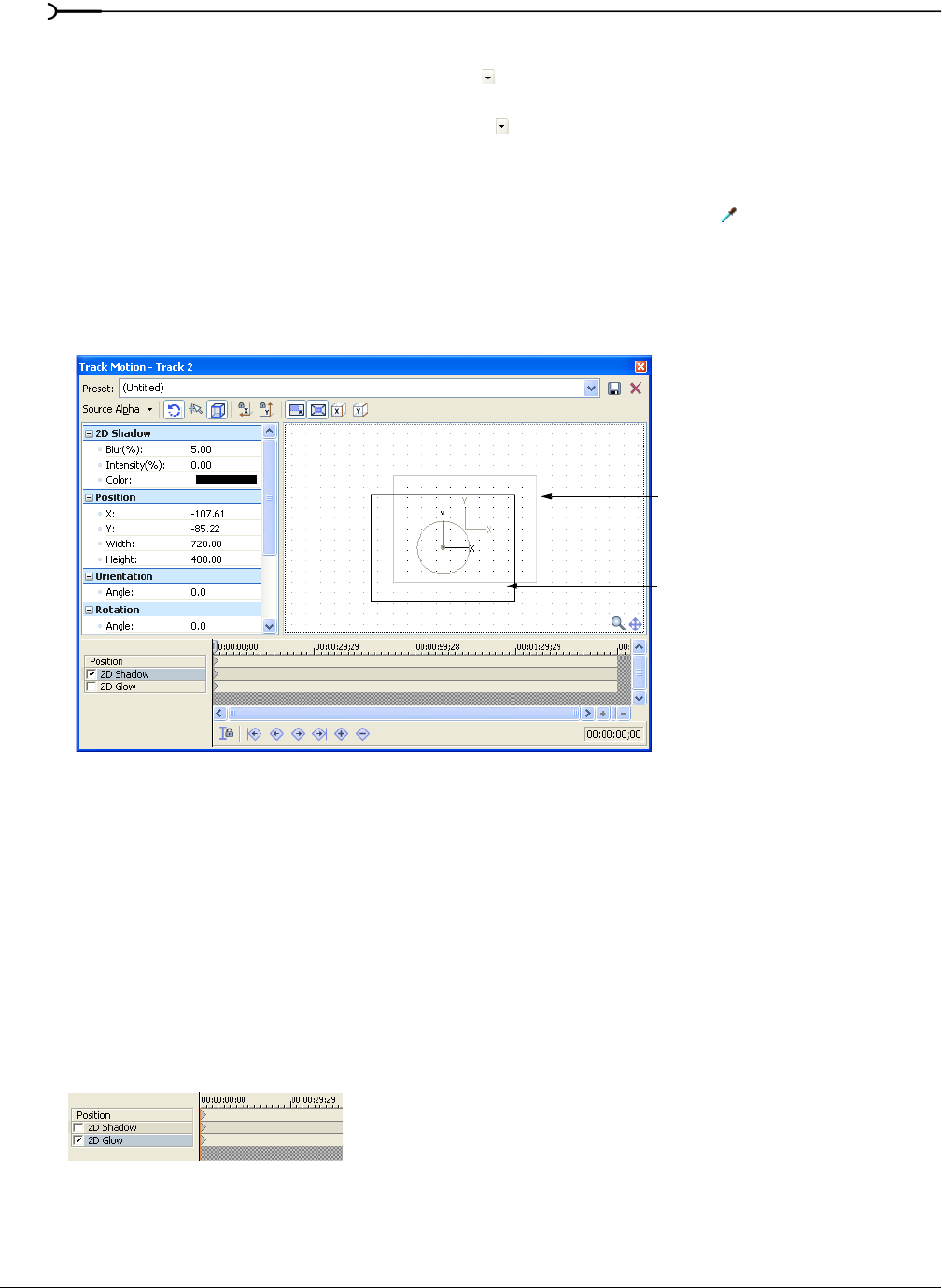
284
ADDING VIDEO TRANSITIONS AND MOTION CHP. 15
2.
Use the 2D Shadow controls on the left side of the window to set the color and appearance of the shadow:
• Blur % — type a number in the box or click the button to display a slider you can use to soften the
edge of the shadow. Set to 0 for a hard edge, or increase the setting to feather the edge of the shadow.
• Intensity — type a number in the box or click the button to display a slider you can use to establish
the transparency of the shadow's blurred edge. Decrease the setting for a translucent shadow, or increase
the setting for a more opaque shadow.
• Color — click the down arrow next to the color swatch to display a color picker. Use the sliders or edit
boxes in the color picker to set the shadow color, or use the eyedropper tool (
) to sample a color from
your screen.
3.
Adjust the size position of the shadow by dragging the box in the workspace or using the Position,
Orientation, and Rotation controls on the left side of the window. For more information about manipulating
the selection box, see Controlling track motion on page 281.
4.
To animate the shadow, click in the 2D Shadow row of the Keyframe Controller to set the cursor to a later
time and adjust the shadow settings.
2D Glow
Glow is a bright haze surrounding an overlay. In general, light colors are used for glow effects, but you can
emphasize bright text on complex backgrounds by using a very small black glow, with little or no feathering,
and 100% intensity.
1.
Select the 2D Glow row in the keyframe controller. When the 2D Glow row is selected, glow controls are
displayed in the Track Motion dialog.
Select the
2D Glow check box to apply the glow so you can see the results of your shadow in the Video
Preview window, or clear the check box to bypass the glow.
Cropped video
Shadow
